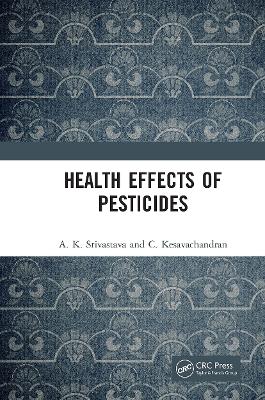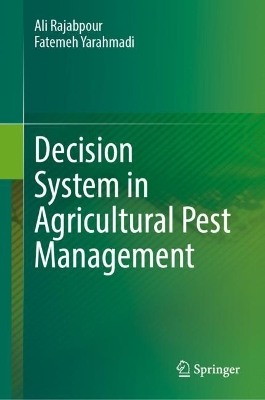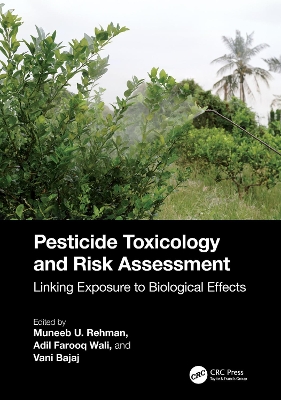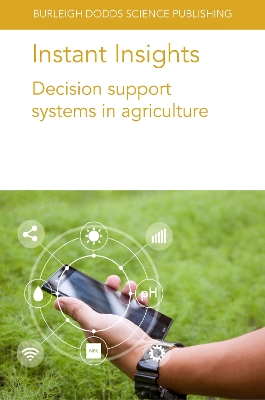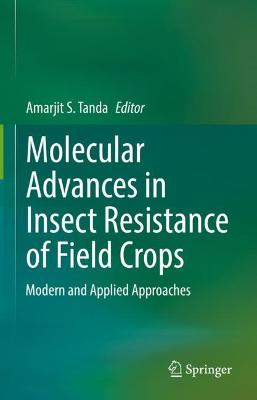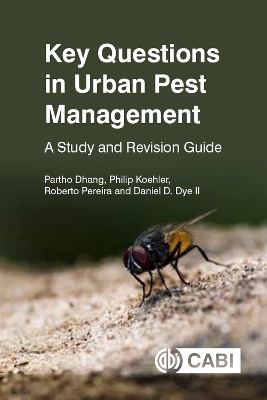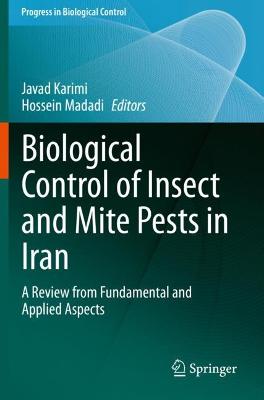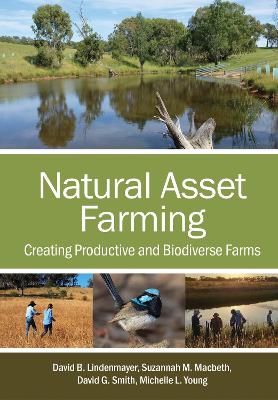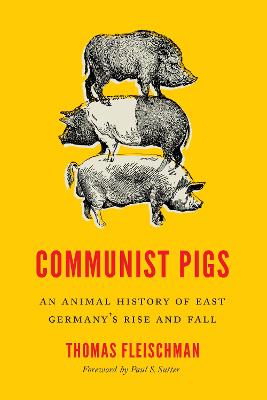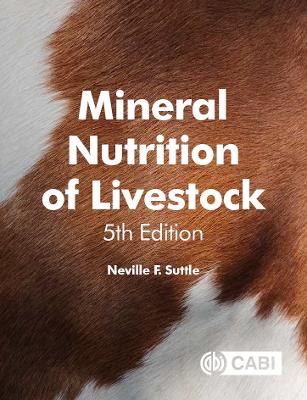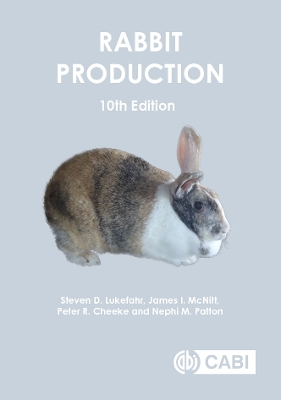Pests and parasites of horses
 portes grátis
portes grátis
Pests and parasites of horses
Machtinger, Erika T.; Lacher, Erica; Weeks, Emma N.I.; Geden, Christopher J.
Wageningen Academic Publishers
04/2022
396
Mole
Inglês
9789086863716
15 a 20 dias
Chapter 1. Introduction to 'Pests and parasites of horses' 9
1.1 Overview of the book 9
Continuing education 13
Photo credits 15
Chapter 2. Basic information on pests and parasites of horses 17
Chapter overview 17
2.1 Basic arthropod anatomy 18
2.2 Arthropod life cycles 20
2.3 Parasitic worm identification and life cycles 22
2.4 Quick identification key to pests of horses 24
2.5 Useful pest identification tools 31
Photo credits 35
Chapter 3. Fly pests that develop in manure and waste 37
Chapter overview 37
3.1 Filth flies that can develop in equine manure 38
3.2 Filth flies that cannot develop in equine manure 67
3.3 Veterinary concerns 77
Continuing education 82
Resources 85
References 85
Photo credits 86
Chapter 4. Fly pests that develop in water 89
Chapter overview 89
4.1 Mosquitoes (family Culicidae) 90
4.2 Biting midges (genus Culicoides) 106
4.3 Horse and deer fly/March fly (family Tabanidae) 116
4.4 Black flies (genus Simulium) 126
Continuing education 135
Resources 136
References 137
Photo credits 138
Chapter 5. Pests that develop and live on horses (ectoparasites) 141
Chapter overview 141
5.1 Ticks (families Ixodidae and Argasidae) 142
5.2 Mites (subphylum Chelicerata) 167
5.3 Lice (families Haematopinidae and Ischnocera) 179
5.4 Keds/louse flies (family Hippoboscidae) 187
Continuing education 192
Resources 194
References 194
Photo credits 196
Chapter 6. Pests found in pastures and forage 199
Chapter overview 199
6.1 Fire ants (genus Solenopsis) 200
6.2 Africanized bees (Apis mellifera subspecies hybrids) 208
6.3 Eye gnats (family Chloropidae) 214
6.4 Blister beetles (genus Epicauta) 221
6.5 Caterpillars with stinging (urticating) hairs (order Lepidoptera) 227
Continuing education 243
References 245
Photo credits 247
Chapter 7. Other insect pests of horses 249
Chapter overview 249
7.1 Warble flies (genus Hypoderma) 250
7.2 Equine bot flies (genus Gasterophilus) 256
7.3 Wound-invading flies: screwworms (family Calliphoridae) and other flies that
develop in wounds (families Calliphoridae and Sarcophagidae) 261
7.4 Mayflies (order Ephemeroptera) 273
7.5 Sand flies (family Phlebotominae) 278
Continuing education 285
Resources 286
References 287
Photo credits 288
Chapter 8. Beneficial and harmless arthropods 291
Chapter overview 291
8.1 Dung beetles (family Scarabaeidae) 292
8.2 Fly predators in manure and bedding 294
8.3 Filth fly parasitoid wasps (family Pteromalidae) 297
8.4 Black dump flies (genus Hydrotaea, a.k.a. Ophyra) 300
8.5 Soldier flies (Hermetia illucens) 303
8.6 Dung midges and black scavenger flies (families Scatopsidae and Sepsidae) 305
8.7 Crane flies (family Tipulidae) 307
8.8 Non-biting midges (family Chironomidae) 309
8.9 Blow flies (family Calliphoridae) 312
8.10 Yellow/golden dung flies (Scathophaga stercoraria) 316
Continuing education 318
Resources 319
References 319
Photo credits 321
Chapter 9. Parasitic worms of horses 323
Chapter overview 323
9.1 Large strongyles and small strongyles 324
9.2 Ascarids (genus Parascaris) 328
9.3 Pinworms (Oxyuris equi) 331
9.4 Tapeworms (genera Anoplocephala and Paranoplocephala) 334
Continuing education 337
Resources 338
References 338
Photo credits 340
Chapter 10. Guidelines for equine pest control 341
Chapter overview 341
10.1 Guidelines for pest monitoring 342
10.2 Guidelines for fly sheets, boots, and masks 342
10.3 Guidelines for using chemical control 346
10.4 Common active ingredients used in chemical control 351
10.5 Best practices for using chemical control 359
10.6 Guidelines for using baits and traps for pest flies 364
Continuing education 368
Resources 369
References 369
Photo credits 371
Chapter 11. Summary 373
Photo credits 374
Appendix A. Glossary and word usage 375
Appendix B. Example integrated pest management plan for equine pests 385
Photo credits 389
About the authors 391
Acknowledgements 395
Chapter 1. Introduction to 'Pests and parasites of horses' 9
1.1 Overview of the book 9
Continuing education 13
Photo credits 15
Chapter 2. Basic information on pests and parasites of horses 17
Chapter overview 17
2.1 Basic arthropod anatomy 18
2.2 Arthropod life cycles 20
2.3 Parasitic worm identification and life cycles 22
2.4 Quick identification key to pests of horses 24
2.5 Useful pest identification tools 31
Photo credits 35
Chapter 3. Fly pests that develop in manure and waste 37
Chapter overview 37
3.1 Filth flies that can develop in equine manure 38
3.2 Filth flies that cannot develop in equine manure 67
3.3 Veterinary concerns 77
Continuing education 82
Resources 85
References 85
Photo credits 86
Chapter 4. Fly pests that develop in water 89
Chapter overview 89
4.1 Mosquitoes (family Culicidae) 90
4.2 Biting midges (genus Culicoides) 106
4.3 Horse and deer fly/March fly (family Tabanidae) 116
4.4 Black flies (genus Simulium) 126
Continuing education 135
Resources 136
References 137
Photo credits 138
Chapter 5. Pests that develop and live on horses (ectoparasites) 141
Chapter overview 141
5.1 Ticks (families Ixodidae and Argasidae) 142
5.2 Mites (subphylum Chelicerata) 167
5.3 Lice (families Haematopinidae and Ischnocera) 179
5.4 Keds/louse flies (family Hippoboscidae) 187
Continuing education 192
Resources 194
References 194
Photo credits 196
Chapter 6. Pests found in pastures and forage 199
Chapter overview 199
6.1 Fire ants (genus Solenopsis) 200
6.2 Africanized bees (Apis mellifera subspecies hybrids) 208
6.3 Eye gnats (family Chloropidae) 214
6.4 Blister beetles (genus Epicauta) 221
6.5 Caterpillars with stinging (urticating) hairs (order Lepidoptera) 227
Continuing education 243
References 245
Photo credits 247
Chapter 7. Other insect pests of horses 249
Chapter overview 249
7.1 Warble flies (genus Hypoderma) 250
7.2 Equine bot flies (genus Gasterophilus) 256
7.3 Wound-invading flies: screwworms (family Calliphoridae) and other flies that
develop in wounds (families Calliphoridae and Sarcophagidae) 261
7.4 Mayflies (order Ephemeroptera) 273
7.5 Sand flies (family Phlebotominae) 278
Continuing education 285
Resources 286
References 287
Photo credits 288
Chapter 8. Beneficial and harmless arthropods 291
Chapter overview 291
8.1 Dung beetles (family Scarabaeidae) 292
8.2 Fly predators in manure and bedding 294
8.3 Filth fly parasitoid wasps (family Pteromalidae) 297
8.4 Black dump flies (genus Hydrotaea, a.k.a. Ophyra) 300
8.5 Soldier flies (Hermetia illucens) 303
8.6 Dung midges and black scavenger flies (families Scatopsidae and Sepsidae) 305
8.7 Crane flies (family Tipulidae) 307
8.8 Non-biting midges (family Chironomidae) 309
8.9 Blow flies (family Calliphoridae) 312
8.10 Yellow/golden dung flies (Scathophaga stercoraria) 316
Continuing education 318
Resources 319
References 319
Photo credits 321
Chapter 9. Parasitic worms of horses 323
Chapter overview 323
9.1 Large strongyles and small strongyles 324
9.2 Ascarids (genus Parascaris) 328
9.3 Pinworms (Oxyuris equi) 331
9.4 Tapeworms (genera Anoplocephala and Paranoplocephala) 334
Continuing education 337
Resources 338
References 338
Photo credits 340
Chapter 10. Guidelines for equine pest control 341
Chapter overview 341
10.1 Guidelines for pest monitoring 342
10.2 Guidelines for fly sheets, boots, and masks 342
10.3 Guidelines for using chemical control 346
10.4 Common active ingredients used in chemical control 351
10.5 Best practices for using chemical control 359
10.6 Guidelines for using baits and traps for pest flies 364
Continuing education 368
Resources 369
References 369
Photo credits 371
Chapter 11. Summary 373
Photo credits 374
Appendix A. Glossary and word usage 375
Appendix B. Example integrated pest management plan for equine pests 385
Photo credits 389
About the authors 391
Acknowledgements 395


